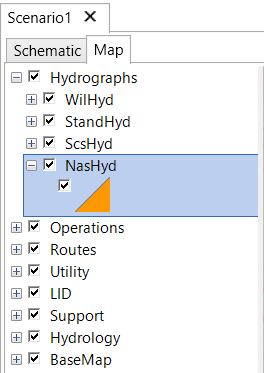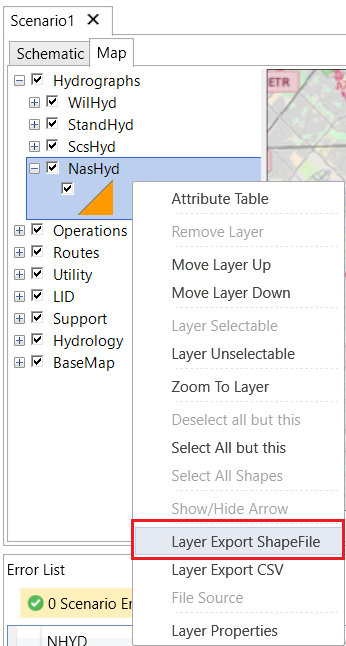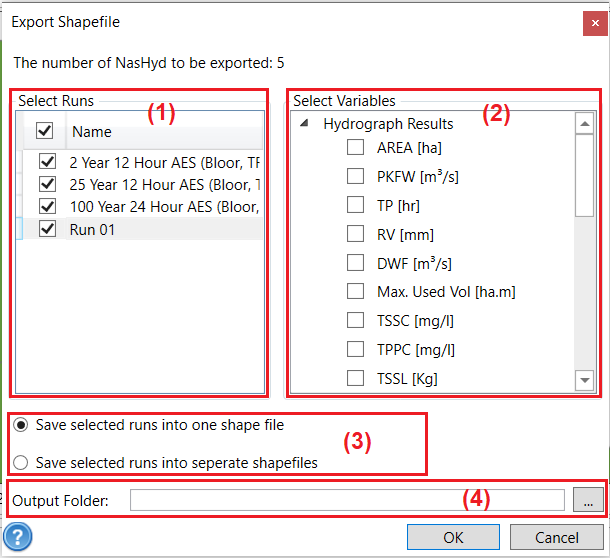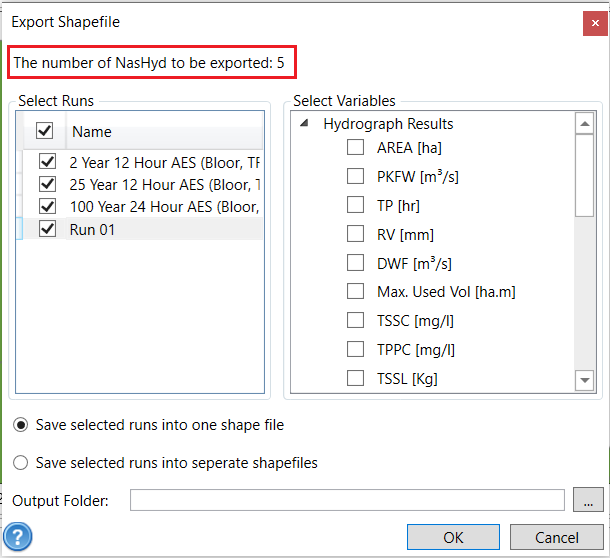Use Export Layer to directly export a layer as shapefile together with a CSV file. To use this tool:
- Expand the layer table of the Map and click on the layer that is to be exported. For example, in the figure below, the layer NasHyd is selected.
- Use either of the following two ways to open the Export Layer tool
- Click the Export Layer button
from the GIS ribbon
- Right click on the selected layer and in the opened context menu select Layer Export Shapefile
- Click the Export Layer button
- In the opened tool window, (1) select which runs to be exported, (2) select which variables to be included, (3) choose whether to export all selected runs into one file or separate files, and (4) select the folder where to store the export file in Output Folder. If there is no run, skip (1) and (2).
The Export Layers tool exports layers following the rules as below:
- The number of objects to be exported will be displayed at the top of the tool window. If the selected layer does not have any object selected, the tool will export all the objects of that selected layer. Otherwise, the tool will only export the selected objects. Therefore, this tool can be used with selection tools. For example, users can select upstream/downstream objects and then export those selected objects. For more information about selection, please refer to Selecting Hydrologic Objects.
- The parameters will be automatically included in exported files. Users need to select which result variables to be included.
For single-event OTTHYMO project, users can select from Hydrograph Results and Water Quality Results if water quality simulation is activated.
For continuous OTTHYMO project, users can select from Water Balance Results and Water Quality Results if water quality simulation is activated.
To select or deselect all the variables, right click on the variable group, for example, Hydrograph Results in a single-event OTTHYMO project, and in the opened context menu choose to Select All or Deselect All.
- Due to the limitation of shapefile, the attribute names in the shapefile cannot exceed 10 characters. Therefore, the column names displayed in the shapefile will be truncated. In order to help users see the full names of the exported columns, a CSV file delimited by semi-colon is exported along with the shapefile. The CSV file will show the full name of each column. The CSV file also has a WKT column. Therefore, users can also import the CSV file into other GIS applications to view the shape and the full name.
Screenshot example of column names saved in shapefile
Screenshot example of column names saved in csv file
- The name of the files depends on the run name and the layer name.
If users choose to save all the selected runs into one file, the file name is the same as the exported layer, for example, “NasHyd.shp” and “NasHyd.csv”.
If users choose to save selected runs into separate file, the file name is in a format of “layer name”_“run name”, for example, “NasHyd_Run 01.shp” and “NasHyd_Run 01.csv”



 from the GIS ribbon
from the GIS ribbon





